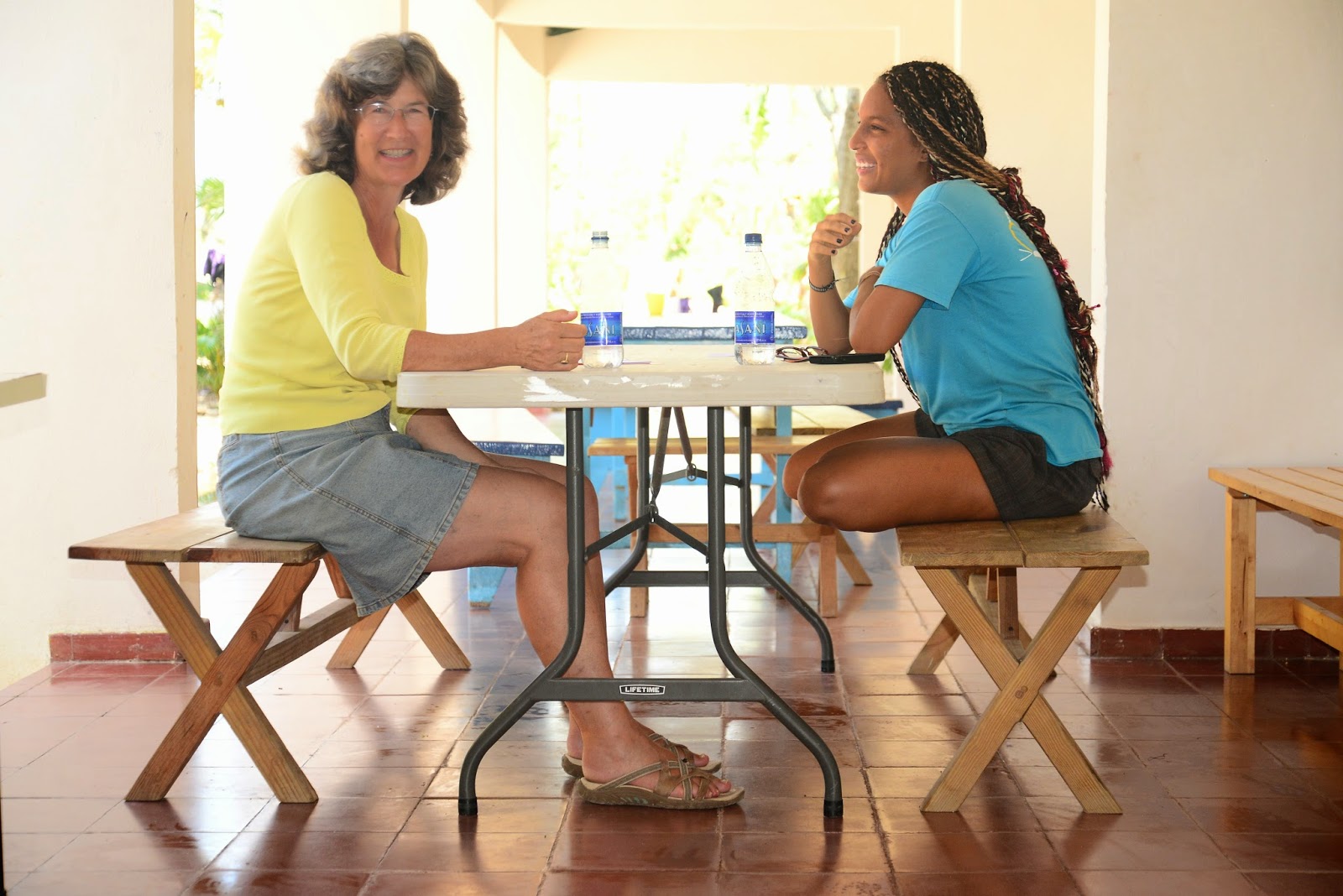By Francoise Heyden, Middle School Spanish Teacher at Carolina Friends School in Durham, North Carolina
What a gift this Nobis World service-learning trip to the
Dominican Republic was! And on so
many levels! This intense and
powerful week immersed in cultural learning was well worth the effort of scraping
together the funding for it! The Nobis World program prepared us via carefully constructed e-learning to understand
the historical background and social context of what we saw; once we were
there, the program gave us plenty of tools for processing our experience with
our colleagues; and the forum will stay open this academic year for discussion
and sharing of materials. Nonetheless,
however well-prepared I thought I was, having traveled extensively in the past
and dealt with issues of poverty in other places, I had to be on the island
physically to appreciate the reality of the lives of the girls at the Mariposa Center for Girls in Cabarete. The Nobis Big Ideas framework and
various group activities helped me unpack what we experienced on our trips to
the school and different communities and I enjoyed our group discussions as
each teacher shared his or her impressions. The intensity was both exhilarating and exhausting, making
it challenging to provide the help we wanted to the school and to fully process
how we would apply our service learning ideas to our own classrooms. Ideally, we would have had a couple
more days to spend time with the Mariposa teachers to see how to help them most
effectively and to formulate our own plans for service learning once we
returned home. As a Spanish teacher at the Middle
School level, I have lots of ideas for cultural exploration with my
classes. As someone very
interested in promoting service learning at my school, I knew all about the
challenges of engaging students (and staff, for that matter!) in meaningful
community outreach. While I did
not find any easy answers to my questions, I did enjoy having the time to
discuss and reflect on the plans I was starting to formulate. They may not all be feasible for
logistical reasons, but I am inspired to try supporting the Mariposa Center for Girls
with lesson plans my students create to teach Dominican children’s stories (especially
by Julia Alvarez) and with fund-raising.
More ambitious is a plan I have for an elective service class in which
we would create a short documentary segment in the style of the Girl Rising stories about Alba Rosa, the
eleven year old girl who teaches children in her neighborhood after attending
Mariposa Center for Girls.
This amazing and thought-provoking trip strengthened my belief from working on a number of such school projects that service learning has to meet several criteria to make it meaningful for the givers and the receivers. These include: 1) a commitment to establishing a long-lasting relationship between schools (this requires deep listening to their needs, cultural sensitivity, and respect for their way of doing things), 2) personal contact, if not actually physically meeting each other or skyping, at least exchanging photos and letters, 3) solid understanding of how the center operates, what works well for them, what does not, good communication with the staff and parents, 4) assessment of the community resources, history, and relationship with, as well as support for the center, and 5) flexibility and patience as plans evolve. The Nobis Global Action Model and program on the whole gave us a good foundation for elaborating our own school’s service learning projects by giving us a close-up view of helping address Dominican poverty through education at the Mariposa Center for Girls.
This amazing and thought-provoking trip strengthened my belief from working on a number of such school projects that service learning has to meet several criteria to make it meaningful for the givers and the receivers. These include: 1) a commitment to establishing a long-lasting relationship between schools (this requires deep listening to their needs, cultural sensitivity, and respect for their way of doing things), 2) personal contact, if not actually physically meeting each other or skyping, at least exchanging photos and letters, 3) solid understanding of how the center operates, what works well for them, what does not, good communication with the staff and parents, 4) assessment of the community resources, history, and relationship with, as well as support for the center, and 5) flexibility and patience as plans evolve. The Nobis Global Action Model and program on the whole gave us a good foundation for elaborating our own school’s service learning projects by giving us a close-up view of helping address Dominican poverty through education at the Mariposa Center for Girls.


